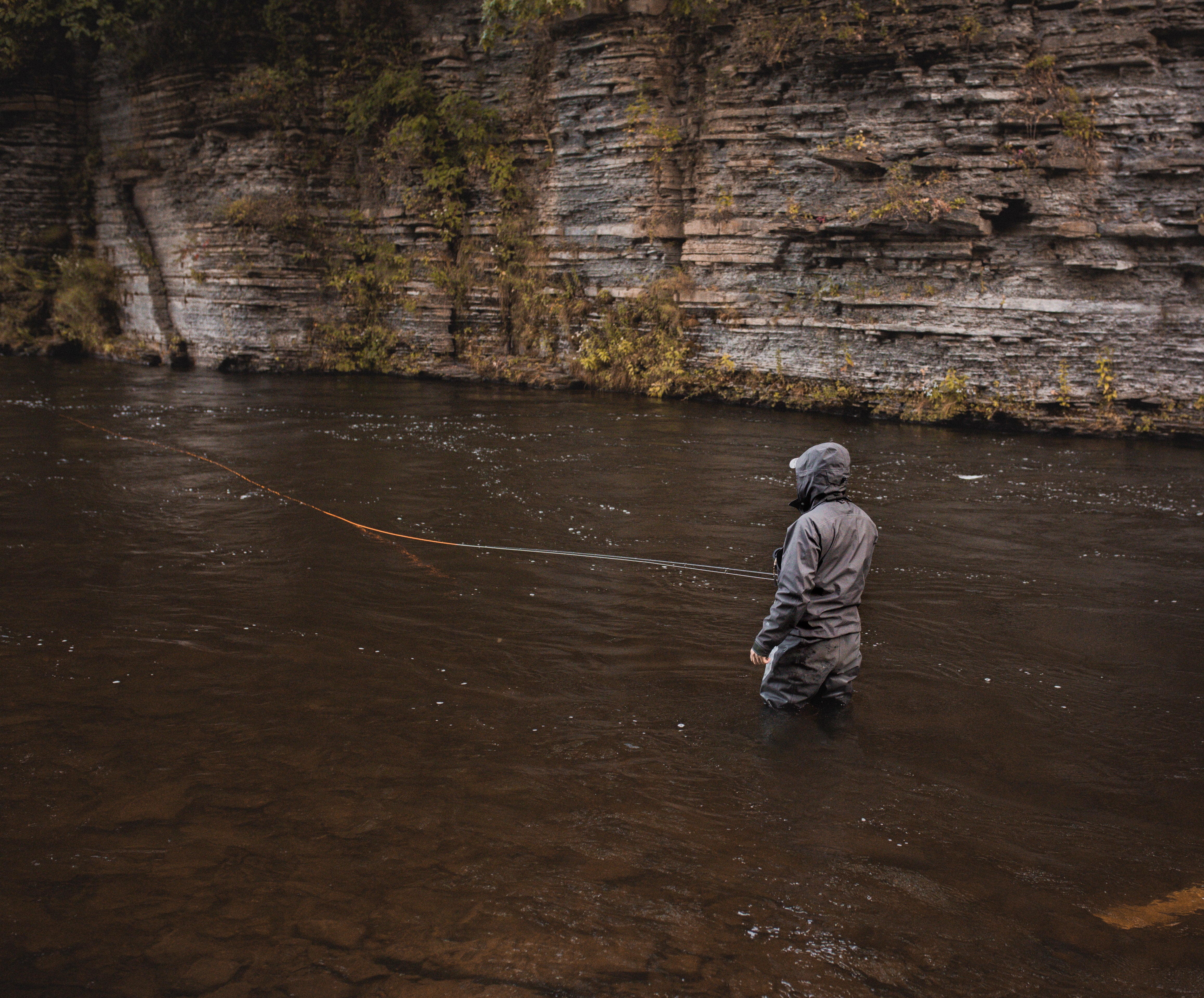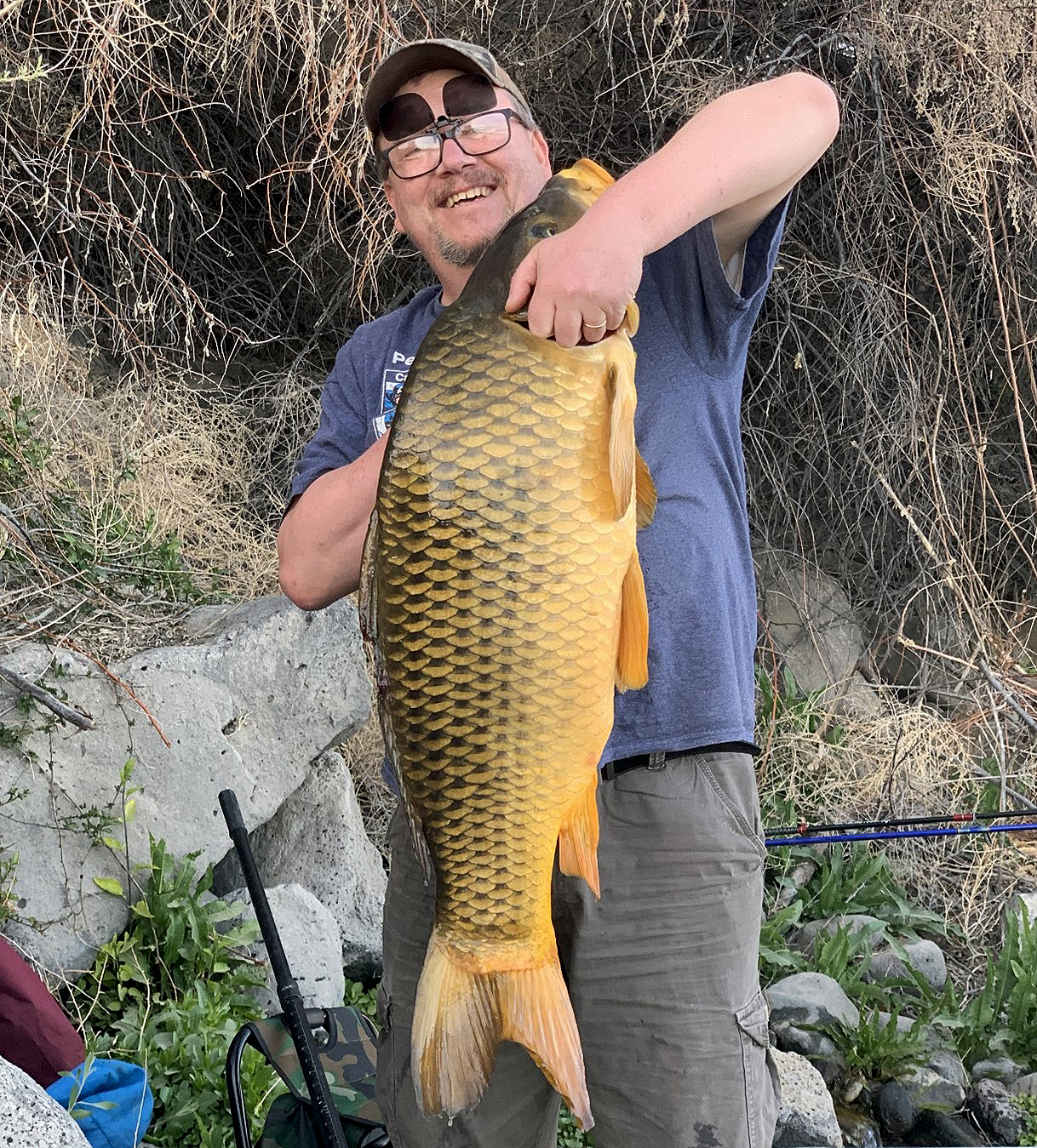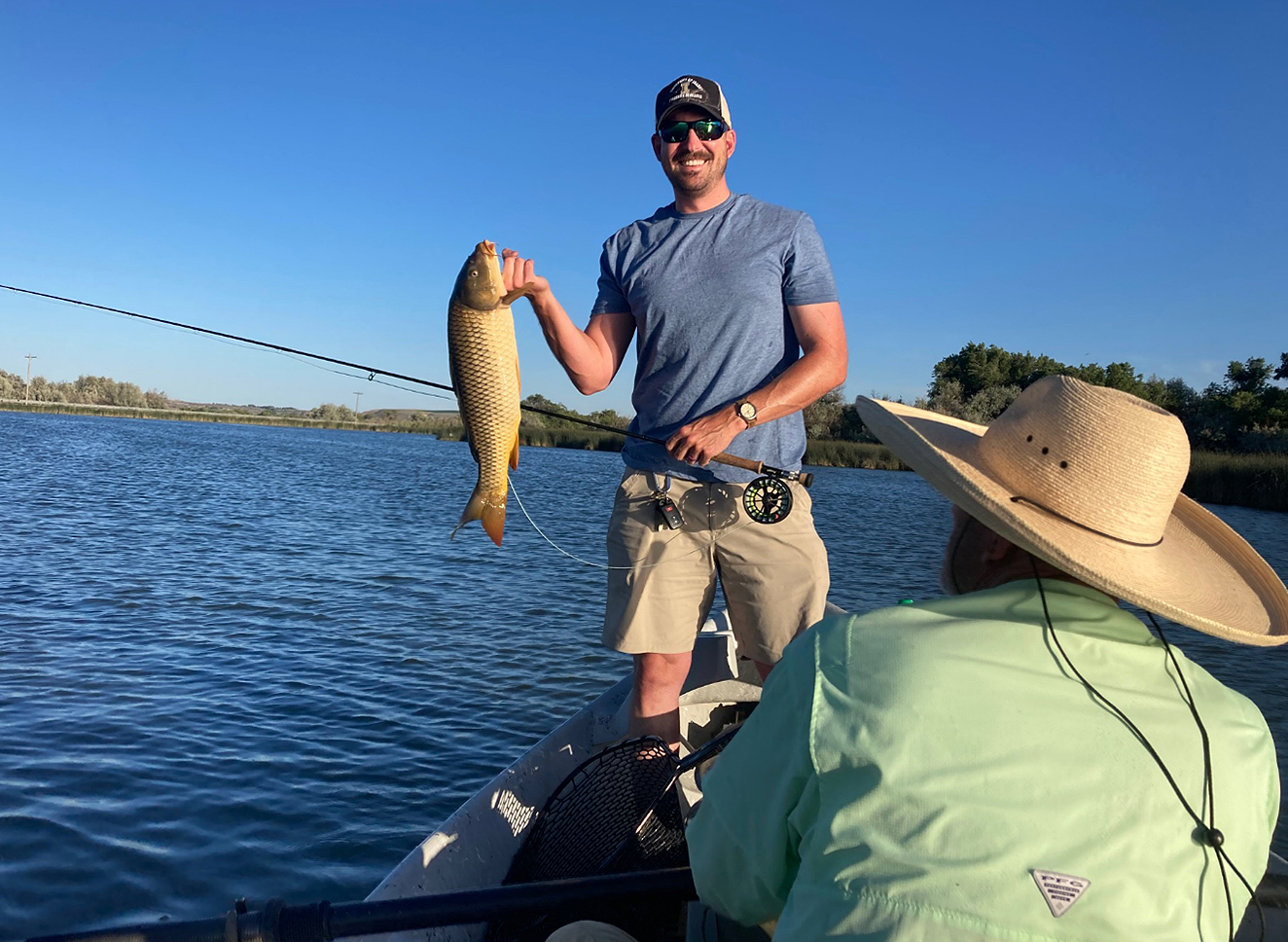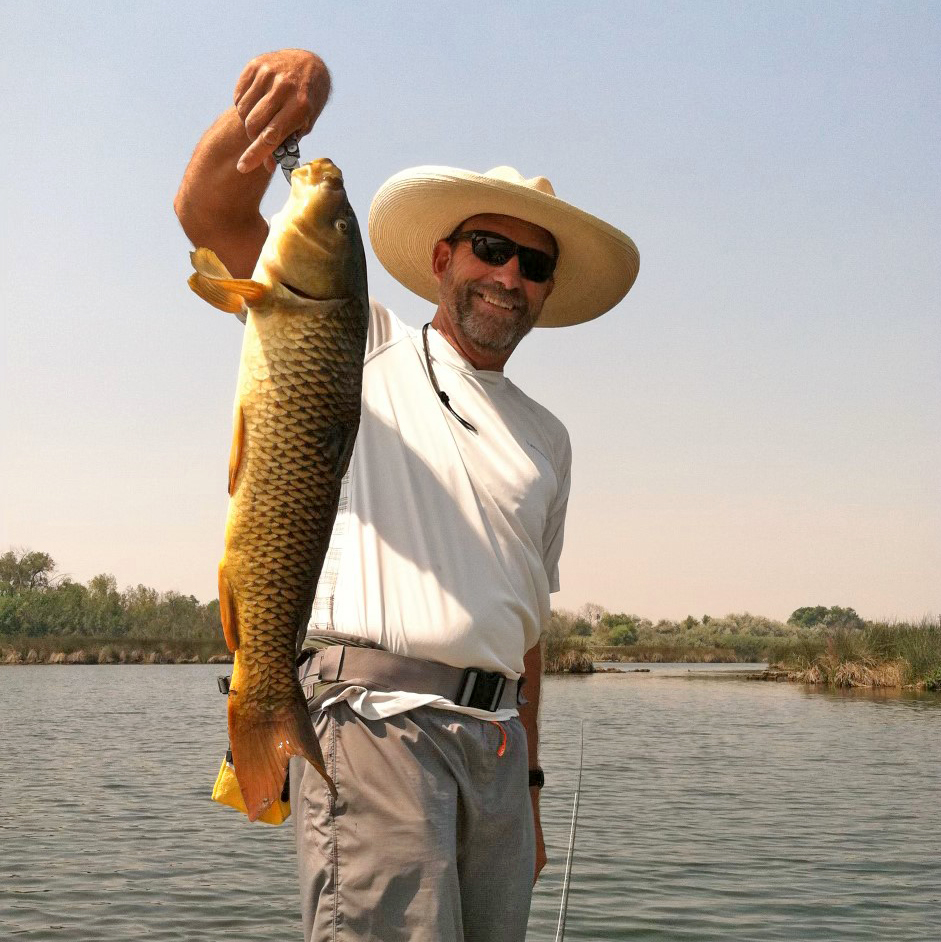September Bartletts Ferry Bass
with Bo Talley
Frustrated with late summer fishing? Tired of hours of casting in hot waters and not finding fish? Head to Lake Harding, known in Georgia as Bartlett’s Ferry, if you want some fast action all day long.
Bartlett’s Ferry is a small Georgia Power Lake on the Chattahoochee River just downstream of West Point Lake. There is good current flow when water is being released at the dam or when power is generated at West Point. The lake level changes a foot or so rapidly due to its size but is usually near full pool until the winter draw down in October.
It is an old lake, full of docks, grass beds and best of all, spotted and largemouth bass. You can catch large numbers of keeper size bass there right now, with a chance for much bigger fish.
Bo Talley grew up in Bibb City, within the city of Columbus, and has fished Bartlett’s Ferry for many years. He works on motors in Phenix City for Randall Marine, which he says has the best selection of bass fishing tackle in the area. They specialize in working on bass boats and cater to the fisherman.
His job puts him in contact with a lot of area fishermen and Bo fishes many tournaments, including the Bulldog BFL trail and most pot tournaments on Bartlett’s Ferry and other area lakes. He plans on fishing the Everstart Series next year and has acquired some sponsors, including Quantum Rods and Reels and JJ’s Magic. His boat is being wrapped by John Allen at Pestey John’s Pest Control.
Bartletts Ferry is one of Bo’s favorite lakes and he does well there. In one tournament he caught two six pound spots and his biggest largemouth from the lake is a 6.9 pounder. His best five-fish limit weighed 26 pounds.
“In September bass are in a transition, holding a little more shallow and feeding in the shallows longer,” Bo said. He targets shallow grass beds for both spots and largemouth this time of year, and also catches bass on bluff walls.
A wide variety of baits work right now, including a Strike Zone Grinder Buzzbait in white or white and chartreuse. Bo likes a smaller bait this time of year and a quarter ounce is standard. Bass will also hit a Spook and a Spro Frog on top, Bo’s favorite way to catch fish.
A KVD Sexy Shad crankbait is also one of his favorites now. It works well for bass holding off the shallow grass beds, waiting to move in and feed. He says you can fish faster now than you have the past few months and catch fish.
For slower fishing a Zoom green pumpkin Swamp Crawler with its tail dipped in JJ’s chartreuse on a three sixteenths ounce Buckeye Spot Remover is his go-to bait. He will also cast and flip a Tommy Gunn half ounce Jawbreaker jig in the blue/green color trailed with a green pumpkin chunk.
We fished Bartletts in early August and caught a lot of keeper size bass. The bigger bass just did not hit that day but they will be hitting better now on these spots. Fish them and you will catch a lot of bass and have a good chance of catching some quality bass as the water starts to cool a little.
1. N 32 44.660 – W 85 08.069 – If you put in at the free Georgia Power ramp at Idlehour or at Blanton Creek Park, you can stay in the river and catch fish all day without running around a lot, an important factor with the price of gas. Run up the river from either ramp to where the river makes a bend back to the right upstream of Blanton Creek. Just before the bend there are houses and docks on your left and they end right at the bend.
On your left you will see two openings into a shallow lake area behind an island running parallel to the river. The second opening is where Bo usually starts first thing in the morning. Stop out in front of it and fish a buzzbait and Spook around both sides and in the middle of the ditch. Work from the bank and opening out to a long cast from the bank.
Bass will hold along this ditch and opening before moving into the shallow grass to feed. Fish the grass at the ditch with a frog or buzzbait then work into the lake area, fishing the grass on both sides. It is very shallow in there so you can’t always fish very far into the lake area on either side, but work the edges and the bank at the back straight in where you can reach it.
Fish back out to the opening and fish the mouth of the ditch on both sides with a crankbait. Fan cast the whole area before leaving. Bo says this is often a good way to pick up a quality fish holding here this time of year.
2. N 32 44.570 – W 85 07.939 – Fish downstream, casting to the bank with topwater and crankbaits, to the next opening. The mouth of it is full of grass under the water that looks like hydrilla and along the edges above the water. There were a lot of baitfish here when we fished and that is the norm that draws in the bass.
Fish into the lake area working your bait over the submerged grass and through the grass sticking out of the water. Fish your buzzbait, Spook or frog all the way to the boat. We got several hits near the boat from bass holding in the grass that goes all the way across the mouth.
Fish into the pocket as far as you can go. Watch for any activity and cast to it with a topwater bait. It is so shallow in here bass will often give themselves away when they move. Fish back to the seawall with lot numbers on it on your left, then fish back out to the river.
3. N 32 44.517 – W 85 07.737 – You can fish the shoreline all the way downstream from this pocket, hitting shallow wood and grass, to the point of the next small creek downstream, or idle down to the dock with a deck on top. When you get near the dock the water gets a little deeper.
Fish topwater around the grass then try a jig head worm from the grass edge out to the boat. Bo says this is a good area for spots and he caught a good keeper on his jighead here. Cast to the edge of the grass and work your bait back to the boat since you may get a hit anywhere out from the grass from bass holding well off it. You can also fish a shallow running crankbait through the area, too.
Fish to the mouth of the small creek and work both sides of it and back into it about 100 feet. The docks on the upstream side are worth skipping your jig head under, especially if the sun is on the water.
4. N 32 46.005 – W 85 08.242 – Run on up the river to where the channel swings back to the right. You will see an island in the main channel and several cuts on your right. One of them is the “false river” that runs around and joins back with the main channel well upstream.
Look to your left before you get to the island and you will see the mouth of a double pocket, with a big shallow lake to the right and a more narrow opening straight ahead. It opens up in the back and there is big new house behind it.
Stop out from the upstream point of this opening. A good ledge runs across it parallel to the river. Keep your boat out in deep water and fish across the top of the ledge with topwater, fishing from the bank down past the mouth of the opening.
After fishing it on top go back over it with a crankbait. Start by casting from the river side across the top, then work to the end of it and into the cut, fishing from the river side into the ditch mouth. Also cast a jig head worm on this ledge. Fish school up on this ledge so it is worth a lot of casts.
After fishing the ledge fish the grass in the mouth of the right hand pocket and the shallow wood around the mouth of the left side with a buzzbait before leaving this spot.
5. N 32 46.027 – W 85 07.947 – Run across the river and upstream. You will see three openings on your right going upstream. Bo goes to the third one, a cut that runs back a short distance into Johnson Island. Starting on the upstream point, fish the grass and wood on both sides with topwater.
Fish on down the bank downstream of the cut. Bo says there is a good ledge here so keep your boat well off the bank. Cast a topwater bait, crankbait and jig head worm under the overhanging brush and work back out across the ledge. Bo got a keeper spot here on a Spook when we fished.
The second opening you will come to is an opening into the false river and current comes out of it, making good eddies when it hits the river. The same thing happens at the next opening, the main mouth of the false river.
The ledges off the upstream points of both openings are good so cover them carefully. Then work into the openings, flipping a jig and pig to the bank and fishing the wood cover along it. The downstream bank and point of the last opening going downstream, the main opening, is deep and a very good place to flip a jig and pig.
6. N 32 44.541 – W 85 07.153 – Head back down the river to where the houses are on your right going downstream. On your left is a long island running parallel to the river. Where it ends a very shallow ledge runs downstream so be careful, but idle in to the upstream point of the second pocket downstream of the end of the island.
Fish the grass on both sides of this opening down to the next small cut. The water is very shallow here but it holds a lot of bass. The wind was blowing into this grass when we fished and Bo says that usually makes for a better bite. We got several bass along this grass on top and on a jig along the edge of it.
7. N 32 44.514 – W 85 07.036 – The upstream point of Blanton Creek is not far downstream. Start on it and fish the grass here back into the creek all the way to even with the no wake buoys. A buzzbait and frog are both good here but also work a jig head worm or jig and pig along the edge of the grass, too.
8. N 32 44.174 – 85 06.662 – Go across the mouth of Blanton Creek to the grass bed between it and the next small creek on your left going downstream. Start fishing the grass about 100 yards upstream of the small creek and fish to it. The water is a little deeper here since it is the beginning of an outside river bend and Bo says he catches a good many good fish here.
Keep your boat out in about nine feet of water and cast back into the grass with a buzzbait or frog. Current will hit this grass and make it better, too. Work anything unusual in the grass like cuts, points and holes in it.
Bo will fish a buzzbait all day long. Sometimes sunny days seem better and others cloudy days are better, but fish all day either way. It was cloudy the day we fished and we caught several bass on top right in the middle of the day.
9. N 32 44.037 – W 85 06.656 – For a change of pace stop on the downstream point of the small creek just downstream of Blanton Creek. It is a bluff wall dropping almost straight off into the river. Keep your boat out in about 23 feet of water and flip or pitch a jig and pig to the bank. Work it slowly down the drop.
Bo likes a half-ounce jig and pig for this fishing. He moves it very slowly so it hits every small outcropping on the bluff on the way down. When your bait falls a foot or so and stops, shake your rod tip without pulling the bait off the small ledge or rock.
Try to show your bait to a fish holding in any crack or hole in the rocks. Fish slowly, making a pitch every few feet. Bo says he catches some pretty decent fish doing this here and on other bluff walls. This is how he got the two six pound spots.
10. N 32 43.254 – W 85 07.289 – Run down to where the river opens up and the channel splits. Right where it opens up there is a small creek on your right going downstream. A narrow grass covered point runs across them mouth of this creek from the downstream bank and Bo says it is called the “Hog Pen” since there was a hog pen here. You can still see some of the posts on the point and there are cypress trees on it.
Bo likes to start on the outside end where it comes off the bank and fish upstream. He fishes a buzzbait in the grass along it and flips a jig and pig or pitches a jig head worm to the edge of the grass. Fish all the way around the end of the point and into the creek, working that side to you get to the bank opposite of where you started.
These ten spots all held bass in August and will be even better now. There are many bluff walls on the lake and a lot of grass beds in other areas to fish, too. Head to Bartlett’s Ferry this month and you will have a lot of fun catching bass.









